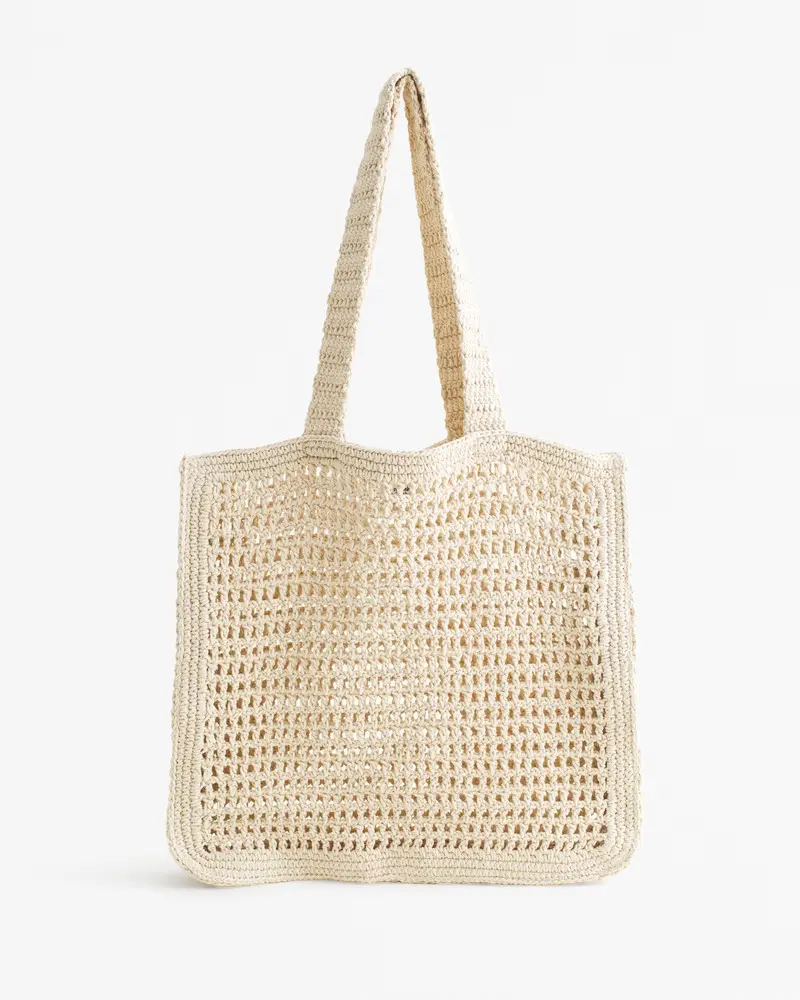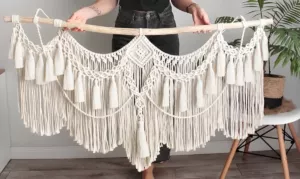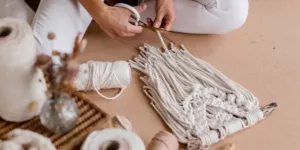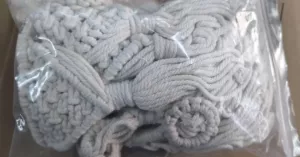Can I Use Wool Yarn in a Tote Bag – Wool yarn is a natural fiber spun from the soft, crimped fleece of sheep. Renowned for its remarkable array of properties, wool has been a cornerstone of the textile industry for thousands of years. Among its most lauded characteristics are its elasticity and resilience, which allow creations to maintain shape and offer comfortable wear. Additionally, wool is highly breathable, making it capable of regulating temperature; it can provide warmth in colder conditions yet remain cool when it’s warm. This breathability further works in tandem with its excellent moisture-wicking abilities, drawing perspiration away from the skin. Moreover, wool is naturally flame-resistant and has antibacterial properties, which hinder the growth of odor-causing bacteria.
These inherent benefits make wool yarn particularly suited for clothing and accessories that require warmth, comfort, and durability. However, when considering wool for a project such as a tote bag, these advantageous properties must be weighed against potential challenges like felting and care requirements.
Types of Wool Yarn
Wool yarn comes in many forms and blends, each offering unique advantages that may influence your choice for a tote bag project:
- Pure Wool: Classic and traditional, pure wool yarn maintains all of the natural qualities of wool, including warmth and elasticity. It is hard-wearing, which is desirable in a tote bag meant to carry heavier items.
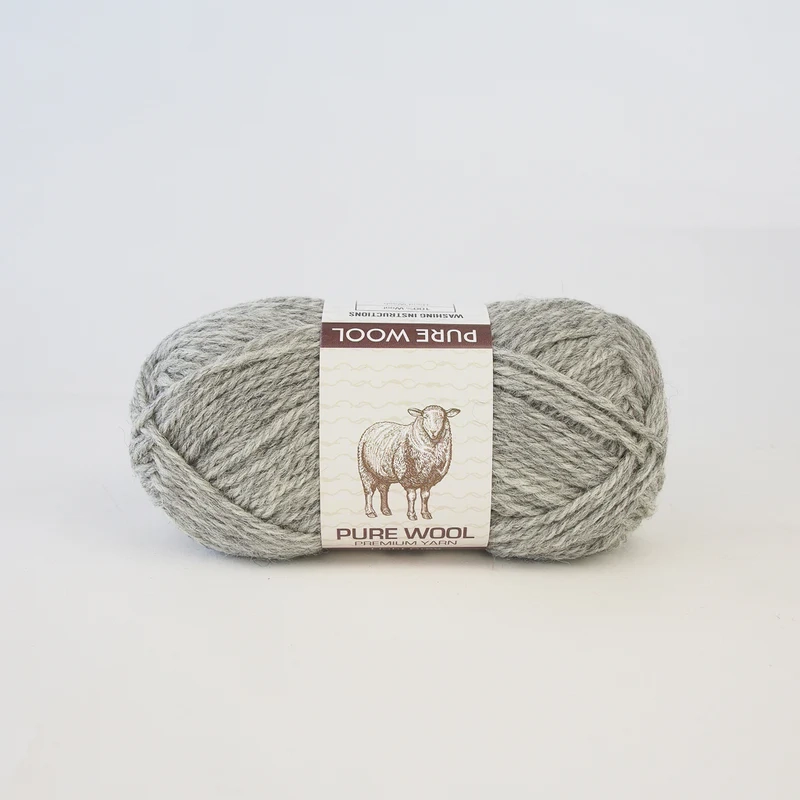
- Superwash Wool: Treated to prevent felting and allow for machine washing, superwash wool is a practical option for a tote bag since it eases maintenance worries and retains wool’s excellent qualities.
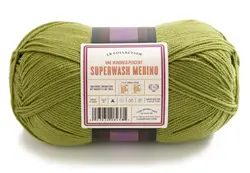
- Wool Blends: Wool can be blended with other fibers, like cotton, silk, or synthetic materials such as nylon and acrylic. These blends can affect the yarn’s strength, sheen, and softness.
- Wool-Cotton Blends: Ideal for increasing breathability and reducing weight, making the tote more suitable for warmer climates.
- Wool-Silk Blends: Offering a touch of sheen and luxury, this combination brings a refined look and added strength, ideal for a more upscale tote bag.
- Wool-Acrylic Blends: Increasing affordability and durability; these blends can provide the best of both worlds, often producing a lightweight yarn that retains much of wool’s desirable properties while being easier to care for.

- Merino Wool: Known for its softness and fine fibers, Merino wool is less prone to itching than other types and could contribute to a softer, more pleasant-to-touch tote bag.
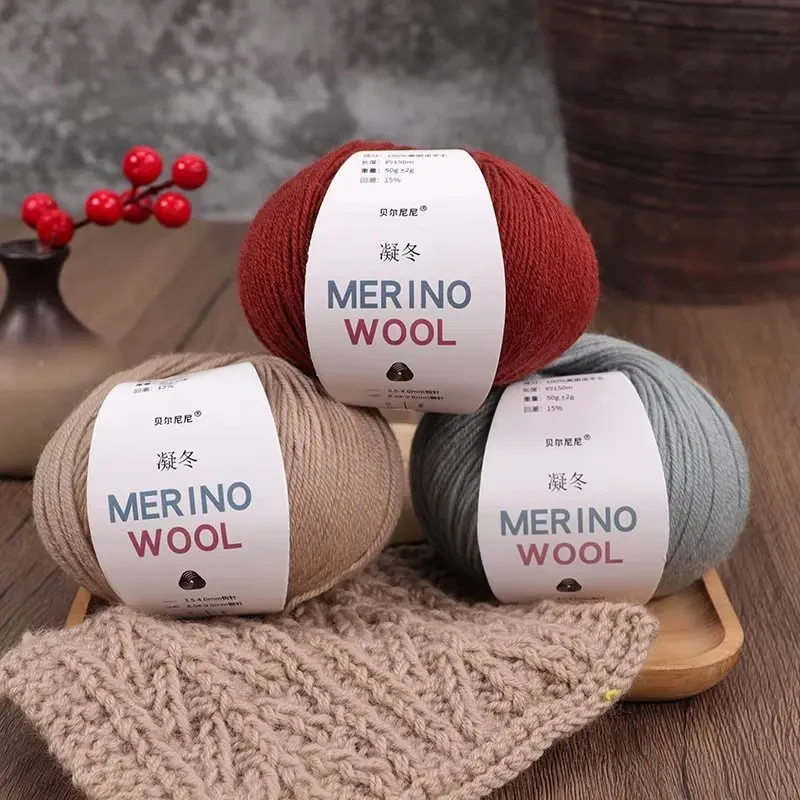
- Chunky Wool: Thick and bulky, chunky wool yarn results in a robust, textured fabric. This could lend itself to a tote bag that stands out and can endure the rigors of everyday use, though it would likely be heavier.
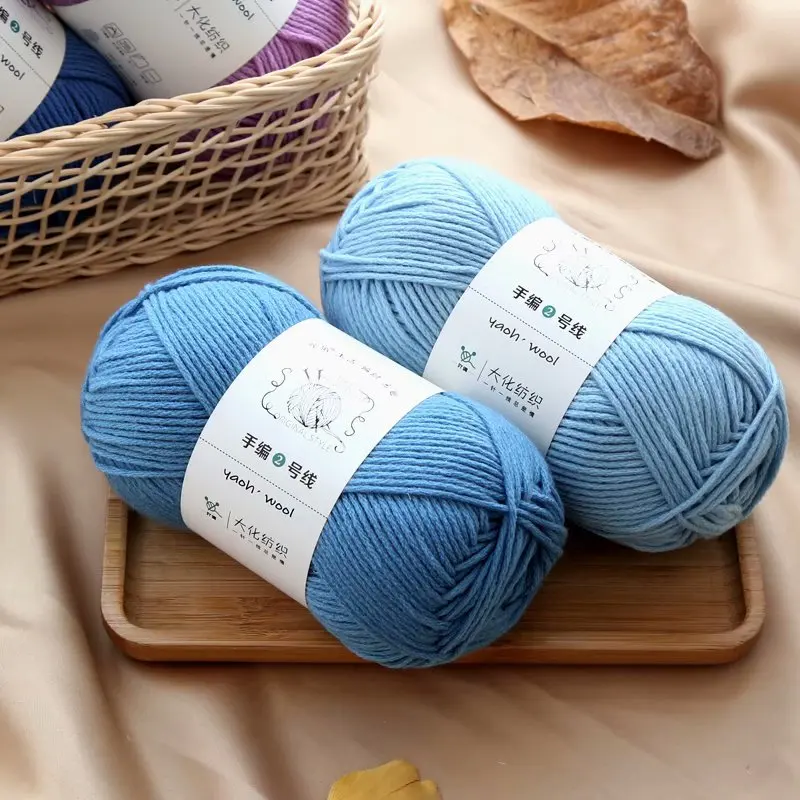
- Lambswool: Taken from a lamb’s first shearing, this yarn is soft, lightweight, and warm. While it could create a luxurious-feeling tote, it may not be as durable as other options without proper care.
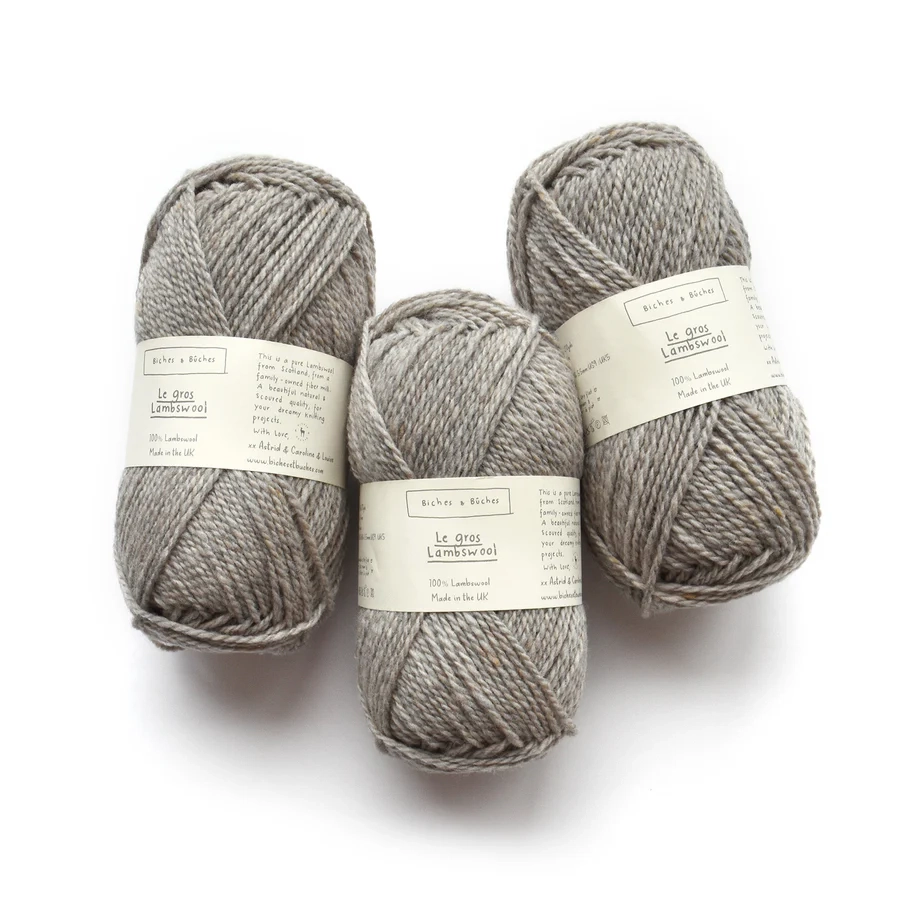
When choosing the type of wool yarn for your tote bag, consider the context of use, the desired appearance and texture, as well as the balance between longevity and care requirements. Whether you opt for a blend that emphasizes endurance or a pure wool that celebrates tradition, the sky is the limit for creative expression in your handmade tote bag project.
Why Consider Wool Yarn for Tote Bags?
The decision to use wool yarn in crafting tote bags goes beyond simply choosing a material; it’s about selecting a fiber with centuries of proven utility, aesthetic appeal, and comfort. Let’s delve into why wool yarn stands out as an excellent choice for tote bag projects.
Durability
Wool is renowned for its natural strength and resilience, qualities that are paramount when considering the creation of everyday items such as tote bags. The fiber’s inherent elasticity allows it to withstand stress and strain, making it capable of retaining its shape and resisting tears. Unlike synthetic fibers that may weaken or pill with frequent use, wool fibers have a natural ability to bounce back, meaning a tote bag crafted from wool can handle the weight of your essentials without stretching out or becoming misshapen. This durability is further enhanced in wool blends, where wool’s robustness is combined with other fibers to achieve an even stronger material. Selecting wool for a tote bag project translates to producing an item not only of beauty but of lasting utility, able to accompany its owner through countless outings.
Style and Texture
Wool yarn isn’t just about strength; it’s a feast for the senses, offering a wealth of aesthetic qualities that can transform a simple tote bag into a piece of wearable art. Available in a rainbow of colors, wool can be dyed to achieve vibrant hues that maintain their richness over time, resisting fading. Additionally, wool’s texture brings a tactile pleasure to both the maker and the user, with possibilities ranging from the smooth, silky feel of Merino blends to the rustic, hearty touch of raw wool yarns. The variety in wool’s texture and weight also allows for creative expression through patterns and knitting or crocheting techniques, from dense, durable weaves to delicate, decorative patterns. A wool tote bag can, therefore, be a reflection of personal style, an accessory that stands out for its handmade charm and quality.
Comfort
The comfort of carrying a tote bag is often overlooked, but wool’s natural softness makes it an ideal choice for items that come into direct contact with the skin. Unlike synthetic materials that can feel scratchy or stiff, wool has a natural softness that can vary from the plushness of lambswool to the subtle smoothness of fine Merino. This softness, combined with wool’s lightness and breathability, ensures that a wool tote feels comfortable on the shoulder, even after prolonged use. Furthermore, wool’s moisture-wicking properties mean that any perspiration is quickly drawn away, keeping the bearer cool and comfortable. For those sensitive to wool or in search of the ultimate in comfort, selecting a fine or superwash wool can reduce or eliminate the risk of itchiness, making a wool tote bag a joy to use day in and day out.
In summary, wool yarn presents a compelling choice for crafting tote bags, blending unparalleled durability with visual and tactile allure, and unmatched comfort. A wool tote is not just a bag but a statement—an embodiment of functional artistry and enduring quality.
Potential Challenges of Using Wool Yarn for Tote Bags
While wool yarn brings several beneficial properties to tote bags, including durability, aesthetic appeal, and comfort, there are potential challenges that crafters might face when choosing wool for such projects. These challenges, from the risk of felting to care considerations and issues related to weight and stretch, are essential to consider for anyone looking to make a practical and long-lasting tote bag.
Felting
One of the inherent qualities of wool is its tendency to felt under specific conditions—namely moisture and agitation. Felting occurs when the microscopic scales on the surface of wool fibers lock together, resulting in a material that is denser and less malleable. While felting can be intentionally used to create sturdy, dense fabric, unintentional felting could alter the bag’s structure and appearance, making it smaller, less defined, or fuzzy. To mitigate the risk of felting, it’s crucial to choose wool yarns treated for resistance to felting, such as superwash wools, or instruct users on the proper care of the bag to avoid conditions that might promote felting.
Care Requirements
The care of wool items entails considerations that could affect the practicality of a tote bag intended for everyday use. Wool often requires special care, such as hand washing or gentle cycle washing, and air drying, to prevent shrinking, felting, or damage to the fibers. These requirements may not align with the expectations for a tote bag, which may frequently come into contact with dirt or spills and thus require more straightforward, low-maintenance cleaning methods. However, advancements in fiber treatments (e.g., superwash processes) have made some wool yarns machine washable, somewhat alleviating these concerns. Still, the necessity for specific care routines may present a practical challenge for the end user.
Weight and Stretch
Wool’s weight and natural elasticity are double-edged swords. On one hand, they contribute to the fabric’s resilience and comfort; on the other, they might influence the bag’s functionality and shape over time. Wool yarn, especially when knitted or crocheted into a dense fabric necessary for a tote bag, can be heavier than alternative materials, potentially making the bag cumbersome when filled with items. Additionally, wool’s elasticity, while beneficial for maintaining shape, can also lead to stretching under the weight of the bag’s contents. This stretching might be exacerbated in bags designed to carry heavier loads, leading to sagging and a possible loss of the originally intended shape and aesthetic. Choosing a wool blend that includes fibers with less stretch or a higher tensile strength, such as nylon, could help mitigate these issues, preserving the bag’s functionality and form.
Despite these challenges, wool remains a favored choice for many projects, including tote bags, due to its unmatched natural properties and beauty. Understanding and addressing these potential difficulties allows crafters to make informed decisions, ensuring that their woolen creations serve their intended purposes while maintaining their integrity and appeal over time.
Overcoming Challenges When Using Wool Yarn for Tote Bags
Navigating the inherent challenges of wool yarn in crafting a tote bag can be accomplished through informed yarn selection, diligent care practices, and strategic reinforcement techniques. Here are some valuable tips and guidance on how to do just that:
Choosing the Right Wool Blend
The selection of the appropriate wool blend is crucial in reducing the propensity for felting and avoiding undesired stretchiness:
- Superwash Wool: This type of wool has been treated to prevent felting, making it machine washable and less likely to shrink or distort. It’s an ideal choice for those who want the warmth and softness of wool without the high-maintenance care requirements.
- Wool Blends with Synthetic Fibers: Combining wool with synthetic fibers such as nylon, acrylic, or polyester can enhance durability, reduce the risk of stretching, and make the yarn easier to clean. These blends often balance the natural benefits of wool with the strength and easy-care properties of synthetic fibers.
- Choose Tighter Spins and Plied Yarns: Yarns that are tightly spun or plied (made by twisting together multiple threads) tend to be stronger and more resistant to stretching. When selecting yarn for a tote bag, look for options with these characteristics.
Proper Care
To maintain the beauty and integrity of a wool tote, follow these care guidelines:
- Read the Label: Always refer to the yarn’s care label before washing. It will provide vital information on whether the item is machine washable or requires hand washing.
- Gentle Washing: If hand washing is necessary, use a gentle wool wash and lukous water. Avoid rubbing or twisting the fabric to prevent felting and distortion.
- Drying Techniques: Lay the tote flat on a clean towel away from direct heat and sunlight to air dry. Reshape the bag while it’s still damp to retain its original form.
- Regular Maintenance: Brushing the bag with a soft-bristled brush can maintain its appearance and prevent pilling.
Reinforcement Techniques
Employ these knitting and crocheting techniques to fortify your tote bag:
- Tight Stitches: Use a smaller needle or hook size to create tight and dense stitches. This can provide more structure and decrease the likelihood of stretching.
- Reinforcement at Stress Points: Incorporate extra stitches or a thicker yarn at the base and handles of the tote bag where tension is the greatest. This will help support weight and reduce stretching.
- Straps and Edgings: Using non-stretch materials such as leather, canvas, or cotton webbing for straps can prevent elongation. Additionally, adding a border or edging in a firm, non-stretchy stitch can help maintain the bag’s shape.
- Lining: Adding a fabric lining can protect the wool from abrasion and sagging. Choose a sturdy fabric that matches the bag’s intended use.
By choosing the correct wool blend, caring properly for the wool tote, and incorporating reinforcement techniques, the functional longevity and aesthetic appeal of a handcrafted wool tote bag can be remarkably enhanced. It’s all about balancing wool’s natural beauty with practical solutions that cater to everyday use.
Inspirational Project Ideas for Wool Tote Bags
Wool’s versatility extends beyond winter wear; it can be transformed into stylish and practical tote bags suited for various purposes. Here are three project ideas that showcase wool’s potential in tote bag design:
Everyday Tote Bag
Create a chic and sturdy everyday tote bag using a fine blend of superwash wool and nylon. This bag will not only look stylish with its natural wool texture but will also stand up to the rigors of daily use thanks to the added durability of nylon.
- Yarn Choice: Choose a medium weight (worsted) superwash wool-nylon blend yarn in a neutral shade like grey or beige, or opt for a bold color like navy or forest green for a pop of color in your everyday outfit.
- Stitch Technique: Utilize a dense stitch pattern, such as the seed stitch or basketweave, which provides texture and structural stability.
- Design Features: Incorporate leather straps for a touch of elegance and additional strength. Add an internal pocket crafted from the same yarn or a contrasting color to keep small items secure.
- Practical Tips: Since this bag is intended for daily use, ensure it’s machine washable for ease of care, courtesy of the superwash wool feature.
Market Tote Bag
Design a robust wool tote bag ideal for carrying groceries. This bag combines functionality with an appealing handcrafted aesthetic, ensuring both resilience and style are at the forefront.
- Yarn Choice: Select a chunky, plied wool yarn for extra strength. A blend with acrylic can reduce weight while maintaining firmness.
- Stitch Technique: A tight crochet stitch, like a single crochet, makes for a strong, dense fabric perfect for holding heavier items. Integrate a mesh or openwork pattern near the top to add stretchability and visual interest.
- Design Features: Make the base sturdy and flat to support grocery items effectively. Consider two sets of handles—short for hand carrying and longer for shoulder support.
- Practical Tips: Ensure the wool is a darker color or mixed hue to disguise any potential stains, and treat the yarn to enhance its water resistance and durability.
Beach Tote Bag
Despite wool not being a traditional choice for beach accessories, a lightweight, breathable wool blend can make an excellent beach tote bag that stands out from the usual canvas models.
- Yarn Choice: Opt for a light wool-blend yarn, potentially mixed with cotton, to keep the bag airy and quick drying. Bright colors or Mediterranean-inspired blues and whites can enhance the summery feel.
- Stitch Technique: Employ a loose knit or a lacy crochet pattern that allows for ventilation and sand to escape easily.
- Design Features: Include an oversized, slouchy design with ample space for towels, sunscreen, and beach reads. A drawstring closure can help keep belongings secure.
- Practical Tips: Wool’s natural UV resistance makes it beneficial under the sun. Choose a superwash treated yarn to ensure the bag can withstand exposure to saltwater and sand.
Each of these projects leverages the unique properties of wool, transforming them into practical tote bags designed for specific uses. Whether it’s navigating the daily commute, shopping for groceries, or enjoying a day at the beach, there’s a wool tote bag ready to be crafted for the occasion.
Tips for Success: Creating Durable Wool Tote Bags
Crafting a wool tote bag that is both functional and stylish requires attention to detail and careful planning. Here are some essential tips to ensure success:
Gauge and Swatching
Before diving into your tote bag project, it’s critical to spend time creating a gauge swatch. It might seem like an extra step, but it is vital for the following reasons:
- Consistency: A gauge swatch will help you determine if your knitting or crocheting tension matches the pattern recommendations. Discrepancies in gauge can lead to a finished product that’s too small or too large.
- Yarn Behavior: Swatching allows you to see how the chosen wool yarn behaves in terms of stitch definition, drape, and feel. This knowledge can inform adjustments before committing to the full project.
- Wash Test: Additionally, washing and blocking your swatch as you would the finished bag can reveal any potential for shrinkage or felting, which is particularly important for wool.
Step-by-Step Guide:
- Cast on enough stitches to create a 4-inch square with the needles or hook and yarn you intend to use for the bag.
- Work in the stitch pattern outlined in the tote bag design for the appropriate number of rows.
- Bind off (or fasten off), wash, and block your swatch to measure the gauge accurately.
Practical Tip: Record your findings. If adjustments are needed, switch needle or hook sizes accordingly and swatch again until the desired gauge is achieved.
Stitch Selection
Choosing the right stitch pattern is crucial for a durable tote bag:
- Tight Stitches: Opt for stitches that create a dense fabric, such that it can support weight without stretching out. The slip stitch in crochet and the linen stitch in knitting are excellent choices for a sturdy fabric.
- Structured Fabrics: Textured stitches like the seed stitch or basketweave add thickness and structural support.
Practical Tip: Make a small swatch with your chosen stitch to assess how it contributes to the fabric strength and stretchiness before starting the actual project.
Lining the Bag
A fabric lining can significantly enhance the functionality of a wool tote bag:
- Stretch Prevention: The lining acts as an internal barrier that supports the wool’s structure, preventing it from stretching out with use.
- Protecting Contents: It provides a smooth surface that safeguards against small items snagging on the wool fibers, and it can also help to safeguard items from moisture.
- Pockets: Including pockets in the lining can provide organized space for smaller essentials, adding another layer of practicality.
Step-by-Step Guide:
- Measure the finished tote bag.
- Cut fabric pieces for the lining, including extra for seam allowances.
- Sew the side and bottom seams of the lining, leaving an opening for turning it right side out.
- Attach the lining to the bag, either by hand-stitching or using a sewing machine, along the top edge or at designated attach points.
- Add pockets and compartments as desired before attaching the lining to the bag.
Practical Tip: Select a lining material that complements the bag’s design and adds minimal bulk, like cotton or polyester blends.
By paying attention to these essential tips, you will set your wool tote bag project on the path to success, ensuring a functional, long-lasting, and stylish accessory.
Conclusion
Wool yarn offers an extraordinary fusion of aesthetic appeal and practicality, making it an exceptional choice for creating tote bags that stand apart for their durability and style. Whether you’re knitting a robust market carryall or crocheting a lightweight beach bag, wool’s natural versatility allows a wide range of creative possibilities.
As we’ve explored, through careful selection of yarn, understanding the importance of gauge, choosing the right stitch, and considering the addition of a lining, your woolen tote can be as resilient as it is chic. These steps help ensure that the final product not only meets the creative vision but also serves its intended purpose effectively.
Remember that wool, with all its benefits, comes with care considerations. Always consider how the tote bag will be used and choose a wool yarn that aligns with the necessary care routine, whether that be easy-to-clean superwash wools or blends designed to withstand the elements.
Enthusiasts and crafting beginners alike should feel inspired to explore wool’s rich spectrum of textures and colors. Embrace the trial and error process as part of the journey, and don’t shy away from experimenting with different wool types, stitches, and finishing techniques. The end result will not only boost your crafting skills but also provide you with a unique and personal accessory.
In a world where fast fashion has led to a proliferation of disposable items, choosing to create a handcrafted wool tote is both an environmentally conscious decision and a statement of individuality. With every stitch, you’re weaving durability with a personal touch, crafting an item that can be treasured for years to come.
So grab your needles or hook, pick a pattern that speaks to you, and let the wool guide your creativity. Happy crafting!

